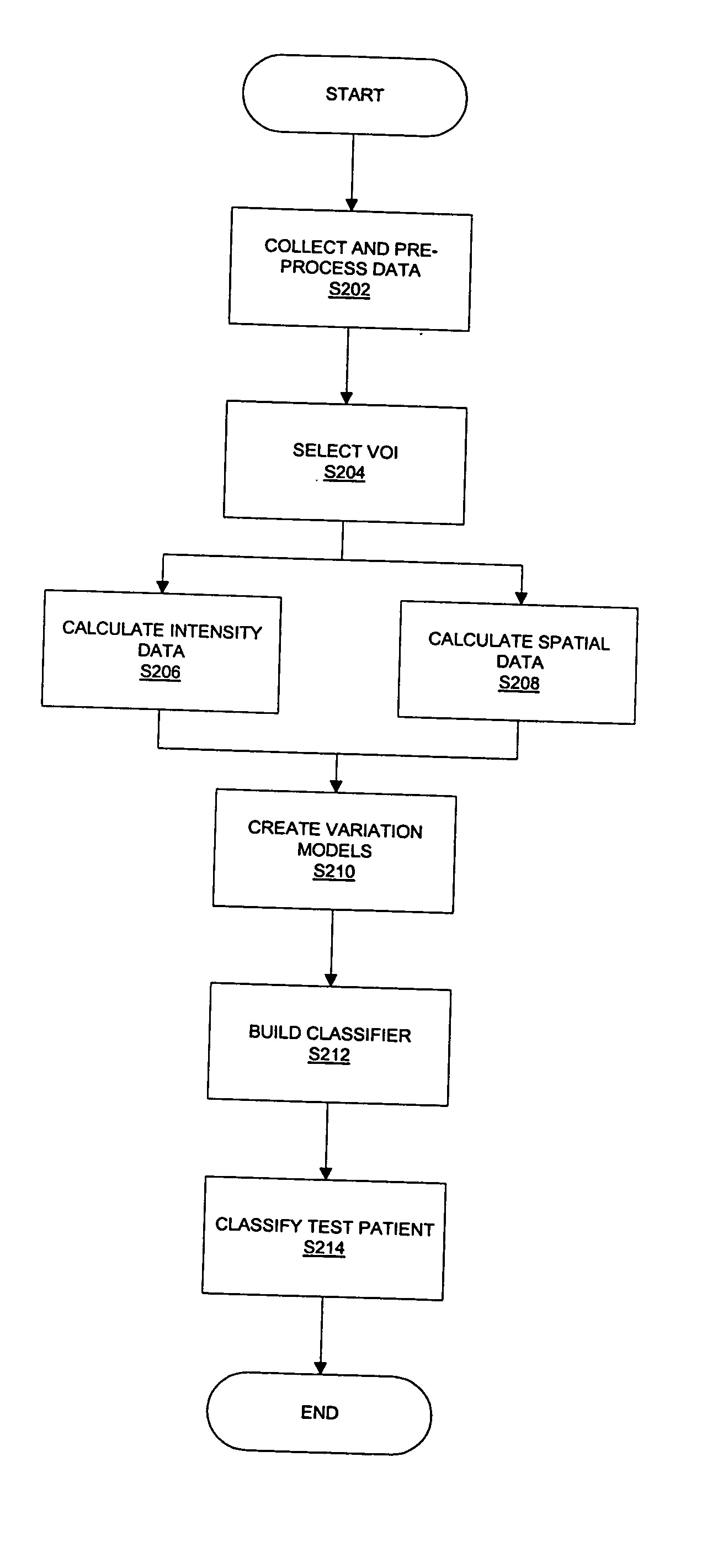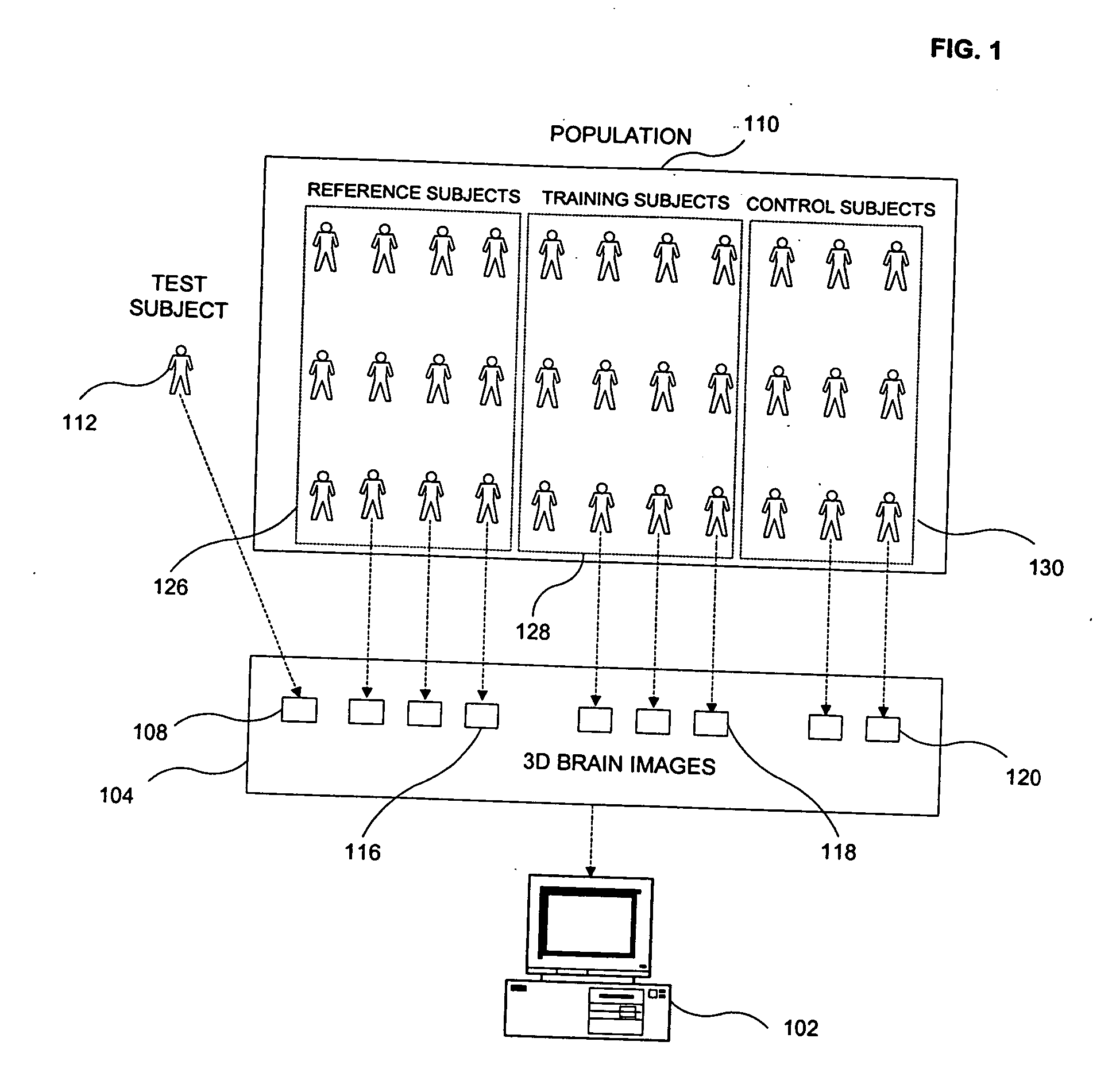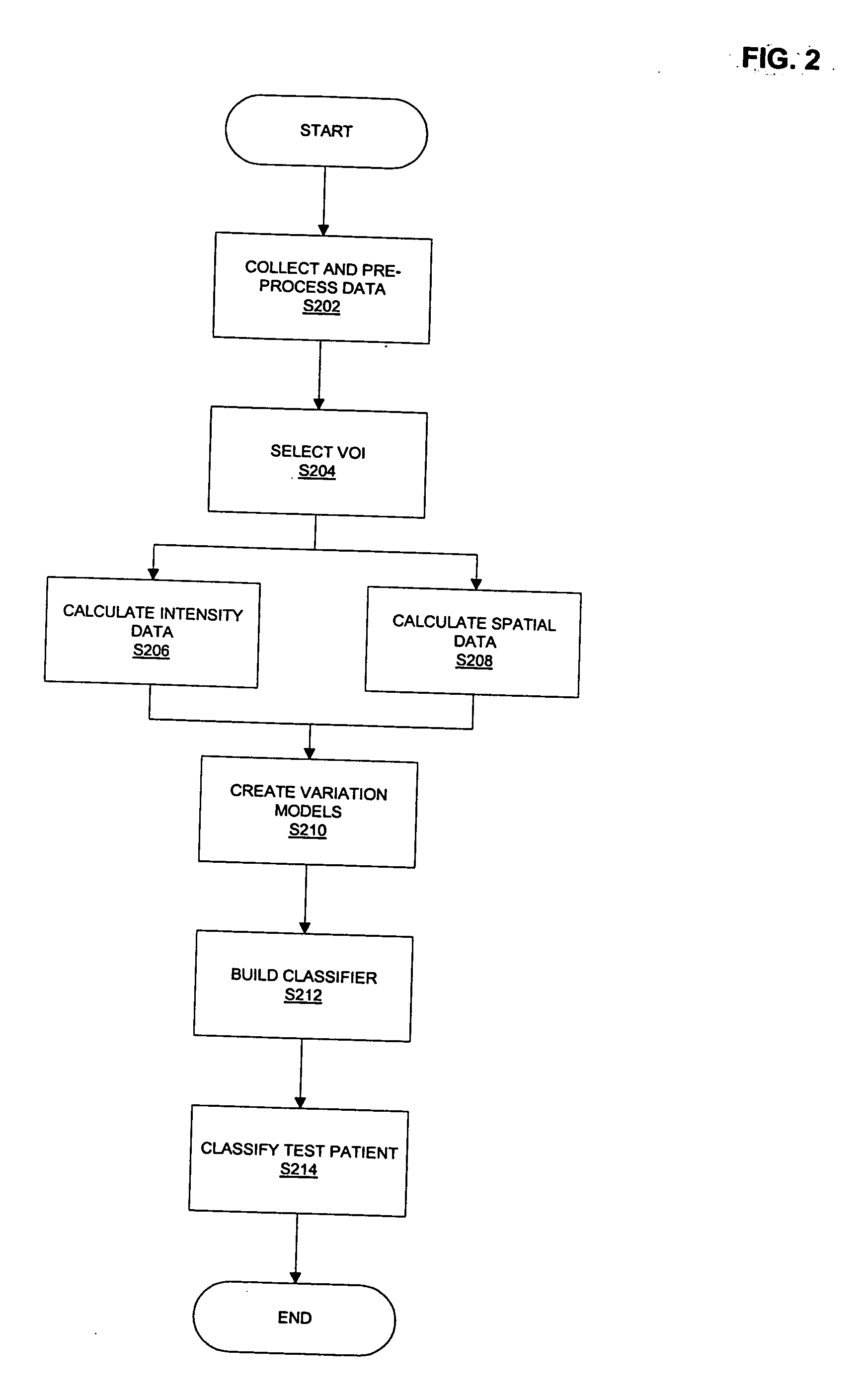Systems and methods of classification utilizing intensity and spatial data
a technology of intensity and spatial data, applied in image data processing, medical data mining, medical informatics, etc., can solve the problems of relying on manual or automated segmentation, resource-intensive manual volumetric results, and process with its own limitations, so as to effectively classify new subjects
- Summary
- Abstract
- Description
- Claims
- Application Information
AI Technical Summary
Benefits of technology
Problems solved by technology
Method used
Image
Examples
Embodiment Construction
[0029] A schematic illustration of the design of an automated classification system 102 in manners exemplary of the present invention is shown in FIG. 1. The example automated classification system 102 determines a classification and diagnosis of the neurological disease state of a given test subject 112, based on 3D image data of the brain 104. The image data 104 may be mono-modal or multi-modal. Possible types of images that may be acquired include, but are not limited to images based on: T1w MRI, T2w MRI, PD MRI, PET, SPECT, and CT.
[0030] As illustrated, example automated classification system 102 is determined using a general purpose computing device, executing software exemplary of the aspects of the present invention. The computing device may have any suitable combination of dynamic and persistent storage memory. To classify the disease state of a test subject 112, a plurality of 3D images 104 is first collected from subjects in population 110 (in some embodiments, typically ...
PUM
 Login to View More
Login to View More Abstract
Description
Claims
Application Information
 Login to View More
Login to View More - R&D
- Intellectual Property
- Life Sciences
- Materials
- Tech Scout
- Unparalleled Data Quality
- Higher Quality Content
- 60% Fewer Hallucinations
Browse by: Latest US Patents, China's latest patents, Technical Efficacy Thesaurus, Application Domain, Technology Topic, Popular Technical Reports.
© 2025 PatSnap. All rights reserved.Legal|Privacy policy|Modern Slavery Act Transparency Statement|Sitemap|About US| Contact US: help@patsnap.com



